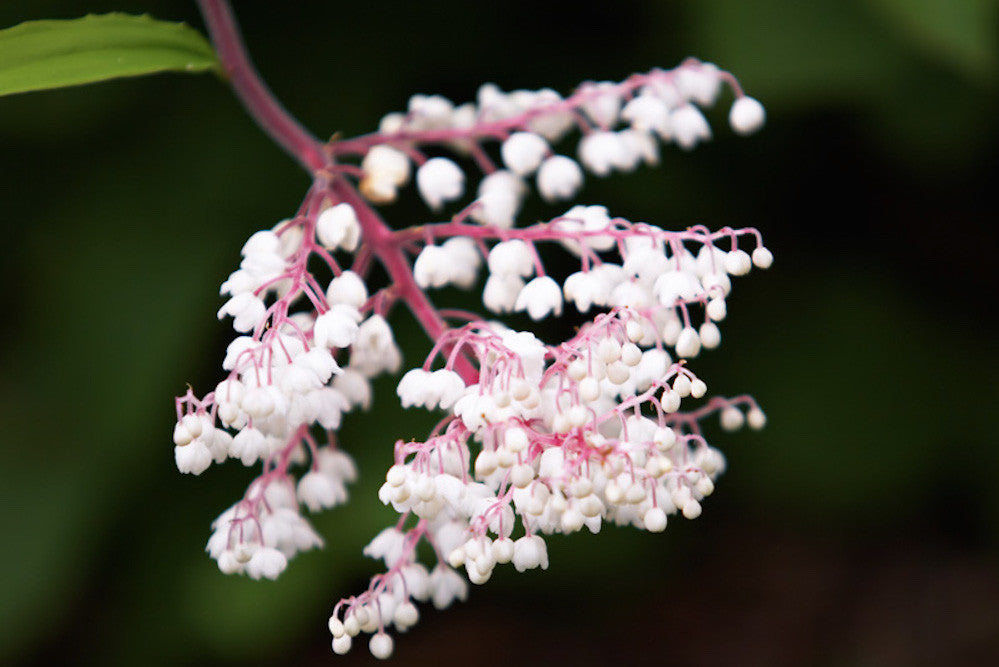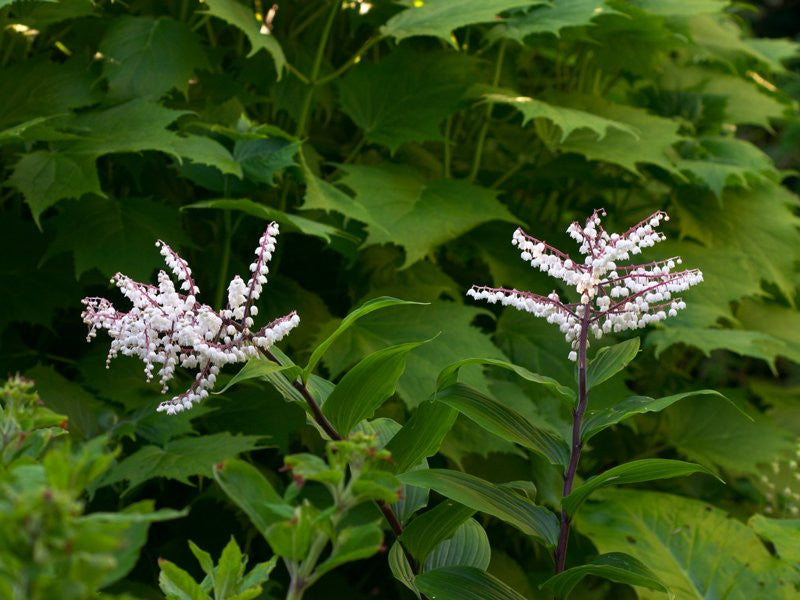Maianthemum oleraceum
Approx. 0.5 litre pot
About this cultivar:
Maianthemum oleraceum is a species of plant first described by John Gilbert Baker (1834-1920). I've seen it described as growing 2 to 4 feet tall. Ours is about 1.5 feet (hard to tell with these rare plants mostly grown from seed collected from the wild - natural variation you see). Red curving stems holding aloft heads of white to sometimes lilac flowers. The tiny bells are followed by fruit that change from red to purple as they ripen. Formerly know as a Smilacina.
- Position: Full sun, partial shade, full shade
- Soil: Almost any soil, grows well in Ballyrobert
- Flowers: May, June, July
- Other features: Woodland Plant, Dappled Shade or Full Shade Loving
- Hardiness: Fully hardy, grows well in Ballyrobert
- Habit: Clump forming
- Foliage: Deciduous
- Height: 30 - 60 cm (1 - 2 ft)
- Spread: 30 - 45 cm (1 - 1.5 ft)
- Time to full growth: 2 to 5 years
- Plant type: Herbaceous Perennial
- Colour: Green, white
- Goes well with: Woodland, fern, hosta
About this genus:
Maianthemum (Latin Māia May and Greek ánthemon flower) is a genus of perennial flowering plants, native to the understory of woodlands. It is widespread across much of North America, Europe and Asia.Is also the genus formerly know Smilacina. Because of genetic similarity, similar fruits, and evidence that the 4-tepal species evolved from a 6-tepal species, the genus Smilacina was combined with Maianthemum.
Maianthemum is a rhizomatous, spreading group of woodland perennial plants that are so frequently confused with Polygonatum, that they are commonly called False Solomon's Seals. The leaves and stalks are so similar to polygonatum, that most people cannot tell one from the other if the plants are not in flower.
Unlike Polygonatum, whose flowers dangle beneath the stems, Maianthemum flowers are produced in terminal clusters called racemes. The white racemes of smilacina flowers are followed in the autumn by attractive clusters of reddish berries. Maianthemum spread slowly via rhizomes and thus make great groundcovers. Smilacina prefers a partially shady site and an evenly moist, rich soil similar to the conditions in its native woodland habitat.In these islands yo could get away with 'full sun''. They grow great in our heavy clay soil garden.
False Solomon's seal is striking in the woodland garden when used en masse or as a background for ferns and hostas.
And let us not forget the smell, of mostly Maianthemum racemosum, - many customers come down to the nursery, and before I've even said hello they will say What is that smell! I want it!.. and who could blame them...




